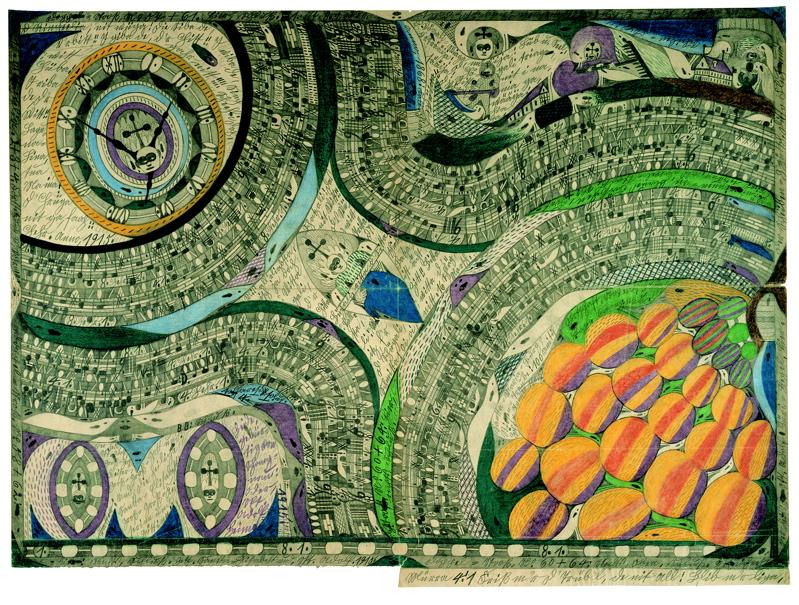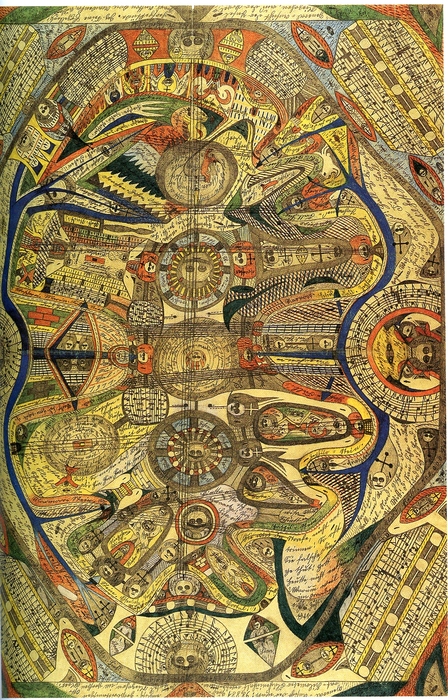 |
Adolf Wolfli,
General View of the Island Neveranger, 1911 |
 |
| Adolf Wolfli |
I am learning a new language and the classes and homework keep me away from working. Images and ideas are queuing up for a round about the studio, and soon there will be thought pile-up. Perhaps that is a good thing for poetry.
 |
Details from Ferdinand Cheval's
Le Palais Idéal, France, 1879 - 1912 |
 |
|
Details from Ferdinand Cheval's
Le Palais Idéal, France, 1879 - 1912 |
|
Something made me go and look up images of outsider art a few weeks ago and the images have stayed with me since then. I wanted to see what its formal language, concepts, and contexts have been. The stories of outsider artists range from the curious to the completely unbelievable: a postman who collected stones from his daily postal rounds and built his dream palace from his collection by combining architecture styles from all over the world that had never lived together let alone seen each other (Ferdinand Cheval); a psychiatric patient--abused as a child and was convicted of similar charges as an adult--who made collages of baffling intricacy out of all packaging materials and drawing tools he could muster in the hospital (Adolf Wolfli); a lady who started decorating her house to counteract the dullness of life till she started to go blind because of her practice and then soon after killed herself (Helen Martins). It isn't fair to abstract their lives into a mere sentence. Perhaps I do so primarily because of the finite nature of my writing itself, but also because the enormity of their life projects lies outside of my comprehension... they feel like dreams I try to explain once my eyes are open. I am in awe.
 |
Helen Martins, Interior of Owl House,
South Africa, 1945-76 |
 |
Helen Martins, Garden of Owl House,
South Africa, 1945-76 |
In my searches I came across the term 'horror vacui.' The term literally means a fear of empty space and is easily applicable to nearly all the outsider or naive art works I came across. Although it is eerie, it isn't unbelievable that many of the outsider artists have suffered from psychosis of one kind or another. One can see it in the horror vacui in the images they make. But it is just as fair to say that the horro vacui is a result of the perception of the world: I imagine it to be an evenly crowded, dynamic, imposing, unrelenting landscape of whispers and monologues in which one could hardly find an opening to merge into. In a way the images become textures, because their busyness is constant.
 |
| Adolf Wolfli |
Last week I was plastering the wall of a room I would like to be my studio. And though the wall was bare I could see horror vacui in its grey cement potholed surface. One could hide it with a wall paper, but the surface would remain underneath. As I plastered, I realised the irony of what I was doing-- though I was filling an empty wall with more material, I was in a way filling away its horror vacui, I was plastering towards an even tone, towards a blanker state. Sometimes you have to work really hard to achieve silence.
The concepts are muddled in my mind now: how is noise different from silence, language different from chaos, texture different from what is plain.







No comments:
Post a Comment